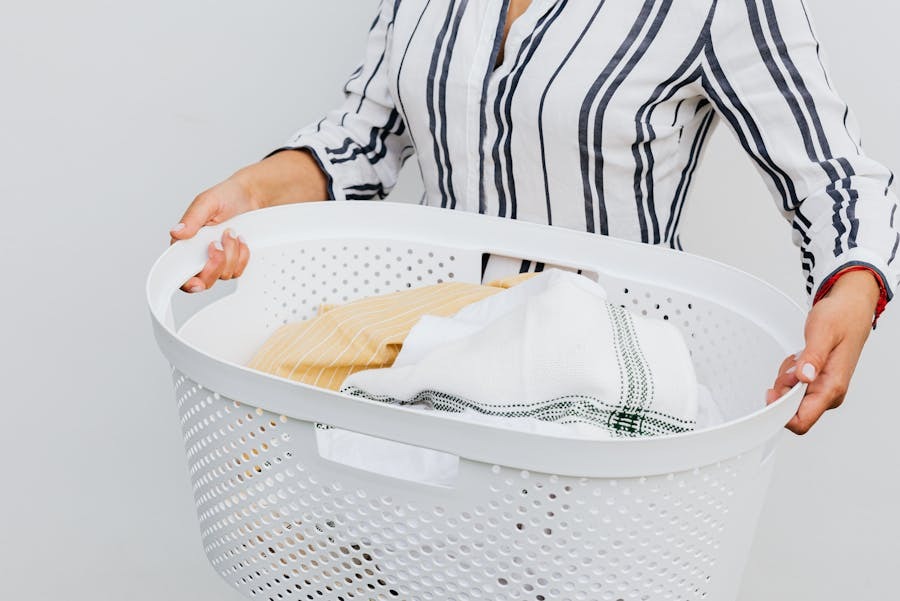There is nothing as annoying about the issue of preserving and maintaining the long life and quality of your clothes like hearing that your favourite top or jumper has shrunk in the laundry. Shrinking clothes is one of the strangest inconveniences people experience when they put their laundry in the house. Nevertheless, this issue may be completely avoided as long as the perfect cleaning methods and care are applied. Knowing a way to preserve your garments from shrinking is essential, whether you wash them yourself or rent a specialists wash and dry laundry service.
Knowing Why Clothes Shrink
It is imperative to determine why the clothing reduces in the presence of the first area before taking preventive action. The first cause of shrinkage is the response of fabrics to heat, moisture and irritation. Natural fibres such as cotton, wool, and cotton that constitute the greatest percentage of garb can also stretch when exposed to high temperatures or during strenuous activities. The fires are elongated and well-woven together comprehensively, considering the material-making technique. Wetness and heat exposure during washing or drying cause such fibres to soften and revert to their original short form.
Choosing the Right Water Temperature
One of the best ideas that can prevent garments to shrink is to control the water temperature at a certain stage in the course of washing. Even though warm water can further smooth more thoroughly, it weakens fibers, as well. Cold or warm water is the safest option of practically all materials. Cotton, for instance, is known to assent when it comes into contact with hot water. Cotton garments should always be washed in cold water and a low detergent to preserve their original structure. Additionally, since warm water can also damage the delicate strands of wool and silk, they should be washed using cool water.
The Significance of Gentle Wash Cycles
Anxiety is also a similarly vital variable that led to the shrinking of apparel. The fibres may also stretch and narrow due to the constant twisting and swirling which occurs in washing machines. When washing clothes that fade easily, it is recommended to use a very small or gentle cycle to minimise the impact. Light cycles are less stressful to fabric fibres since they require significantly less agitation and less spin time.
Washing clothes by hand should be avoided through vigorous wringing. Instead of placing the clothes on the ground to dry, gently squeeze them to remove any additional water. In this way, it is possible to maintain the flexibility and the shape of the material simultaneously and prevent shrinking.
Selecting the Right Detergent
The majority is unaware of the level of seriousness of detergents in preventing shrinkage. When exposed to harsh chemical compounds, fibres may become thinner and more susceptible to shrinkage. Always use mild or material-based laundry detergents, particularly when washing clothes made from cotton, silk, and wool. Since liquid detergents dissolve easily and leave minimal residue compared to powdered ones they tend to be more gentle on textiles. Some detergents also have a material stretch capability, which helps the apparel maintain its shape even after multiple washes.
Drying and Preventing Overheating
Wrong drying is the primary cause of the decrease in clothing. Dryer heat can be particularly detrimental to such natural fibres as linen and wool. Fabric fibres contract after a single or two cycles because they have undergone tumbling (which makes them shrink) and become exposed to high temperatures, which makes them contract.
To avoid this, it is best to always dry clothes that tend to shrink in the air. They can be dried on a drying surface in a well-ventilated space or placed on a fresh towel laid flat. If you need to dry clothes in a dryer remove them when they are still partly wet and set the dryer to the lowest temperature setting. This helps maintain the shape of the outfit and mitigate the effects of prolonged exposure to heat.
Understanding Fabric Care Labels
There is a reason; every piece of clothing has a care label with detailed instructions on washing, drying, and ironing the garment. The second most frequent error that occurs when shrinking clothes is disregarding these labels. Take a moment to look at the label before washing. Do not put anything in the device that says, hand wash only. Always avoid drying something flat on a surface, as the substance may also shrink or be distorted. These guidelines should be followed strictly to prevent narrowing or rupture, as they are primarily based on the specific properties of the substrate.
Final Words
Learning of fabric behaviour when it comes to warmth, moisture, and movement is a valuable point to choosing apparel. It is possible to maintain your clothes in the right situation with the help of determining the correct water temperature, washing in the delicate cycles, not too much heat during drying, and following the care tips.
